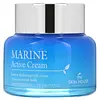What's inside
What's inside
 Key Ingredients
Key Ingredients

 Benefits
Benefits

 Concerns
Concerns

No concerns
 Ingredients Side-by-side
Ingredients Side-by-side

Water
Skin ConditioningGlycerin
HumectantAlcohol Denat.
AntimicrobialDimethicone
EmollientIsononyl Isononanoate
EmollientCarbomer
Emulsion StabilisingDimethiconol
EmollientChlorphenesin
AntimicrobialCaprylyl Glycol
EmollientSodium Hydroxide
BufferingVitis Vinifera Fruit Extract
Skin ConditioningXanthan Gum
EmulsifyingTetrasodium EDTA
Tocopheryl Acetate
AntioxidantAscorbyl Glucoside
AntioxidantMenthoxypropanediol
MaskingMagnesium Gluconate
Skin ConditioningSodium Citrate
BufferingBenzyl Salicylate
PerfumingLinalool
PerfumingCalcium Gluconate
HumectantBiosaccharide Gum-1
HumectantHydroxyisohexyl 3-Cyclohexene Carboxaldehyde
MaskingButylphenyl Methylpropional
PerfumingCI 19140
Cosmetic ColorantCI 42090
Cosmetic ColorantParfum
MaskingPhenoxyethanol
PreservativeWater, Glycerin, Alcohol Denat., Dimethicone, Isononyl Isononanoate, Carbomer, Dimethiconol, Chlorphenesin, Caprylyl Glycol, Sodium Hydroxide, Vitis Vinifera Fruit Extract, Xanthan Gum, Tetrasodium EDTA, Tocopheryl Acetate, Ascorbyl Glucoside, Menthoxypropanediol, Magnesium Gluconate, Sodium Citrate, Benzyl Salicylate, Linalool, Calcium Gluconate, Biosaccharide Gum-1, Hydroxyisohexyl 3-Cyclohexene Carboxaldehyde, Butylphenyl Methylpropional, CI 19140, CI 42090, Parfum, Phenoxyethanol
Water
Skin ConditioningGlycerin
HumectantSodium Hyaluronate
HumectantButylene Glycol
Humectant1,2-Hexanediol
Skin ConditioningVinyldimethicone
Orbignya Oleifera Seed Oil
EmollientAmmonium Acryloyldimethyltaurate/Vp Copolymer
Potassium Olivoyl PCA
CleansingHoney Extract
HumectantSea Water
HumectantPearl Extract
AntioxidantBetaine
HumectantEcklonia Cava Extract
Skin ConditioningSpirulina Platensis Extract
Skin ProtectingEthylhexylglycerin
Skin ConditioningPyrus Communis Fruit Extract
Skin ConditioningRosa Damascena Flower Water
MaskingIris Florentina Root Extract
MaskingCucumis Melo Fruit Extract
Skin ConditioningHedera Helix Leaf/Stem Extract
AntimicrobialWater, Glycerin, Sodium Hyaluronate, Butylene Glycol, 1,2-Hexanediol, Vinyldimethicone, Orbignya Oleifera Seed Oil, Ammonium Acryloyldimethyltaurate/Vp Copolymer, Potassium Olivoyl PCA, Honey Extract, Sea Water, Pearl Extract, Betaine, Ecklonia Cava Extract, Spirulina Platensis Extract, Ethylhexylglycerin, Pyrus Communis Fruit Extract, Rosa Damascena Flower Water, Iris Florentina Root Extract, Cucumis Melo Fruit Extract, Hedera Helix Leaf/Stem Extract
 Reviews
Reviews

Ingredients Explained
These ingredients are found in both products.
Ingredients higher up in an ingredient list are typically present in a larger amount.
Glycerin is already naturally found in your skin. It helps moisturize and protect your skin.
A study from 2016 found glycerin to be more effective as a humectant than AHAs and hyaluronic acid.
As a humectant, it helps the skin stay hydrated by pulling moisture to your skin. The low molecular weight of glycerin allows it to pull moisture into the deeper layers of your skin.
Hydrated skin improves your skin barrier; Your skin barrier helps protect against irritants and bacteria.
Glycerin has also been found to have antimicrobial and antiviral properties. Due to these properties, glycerin is often used in wound and burn treatments.
In cosmetics, glycerin is usually derived from plants such as soybean or palm. However, it can also be sourced from animals, such as tallow or animal fat.
This ingredient is organic, colorless, odorless, and non-toxic.
Glycerin is the name for this ingredient in American English. British English uses Glycerol/Glycerine.
Learn more about GlycerinWater. It's the most common cosmetic ingredient of all. You'll usually see it at the top of ingredient lists, meaning that it makes up the largest part of the product.
So why is it so popular? Water most often acts as a solvent - this means that it helps dissolve other ingredients into the formulation.
You'll also recognize water as that liquid we all need to stay alive. If you see this, drink a glass of water. Stay hydrated!
Learn more about Water